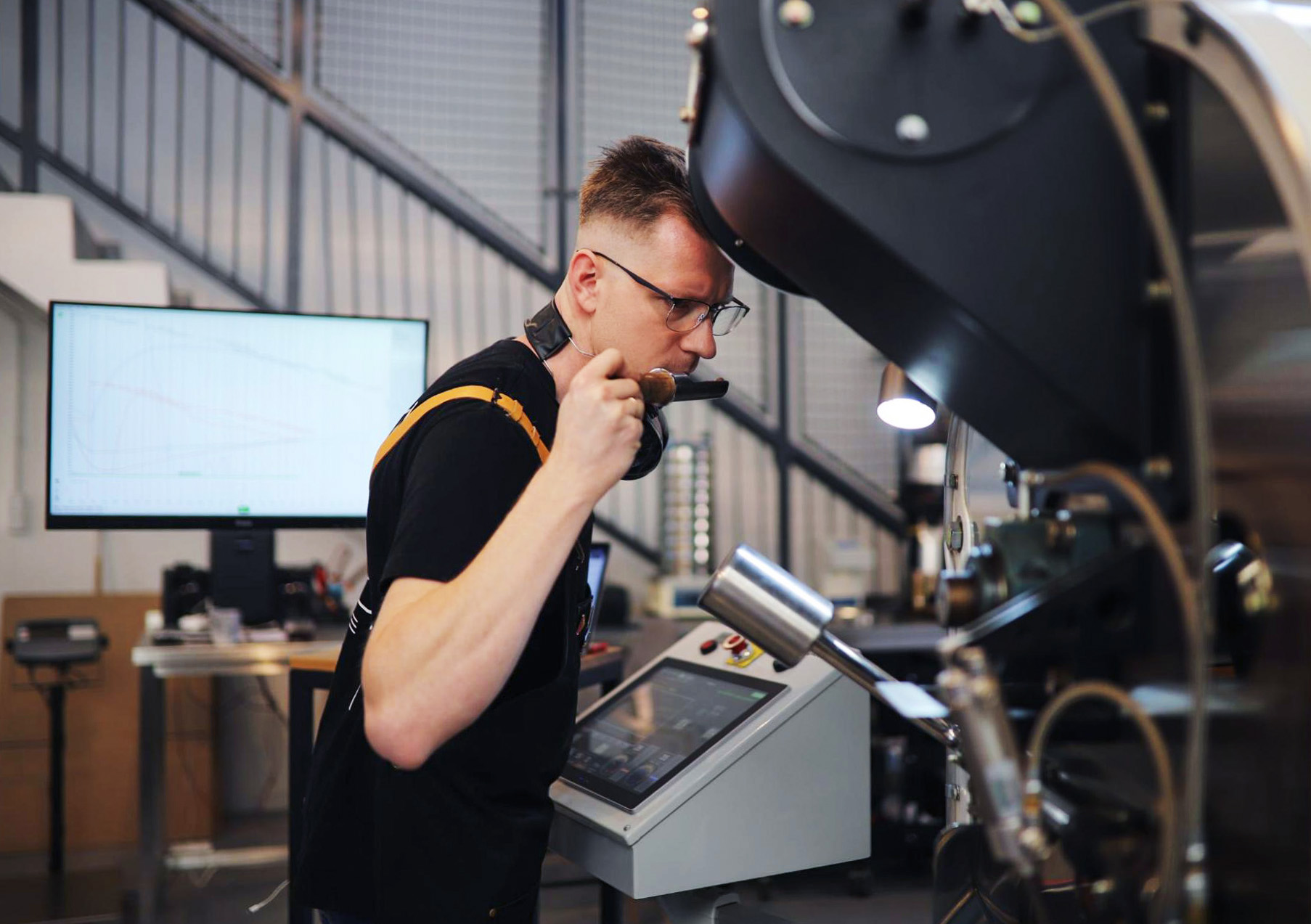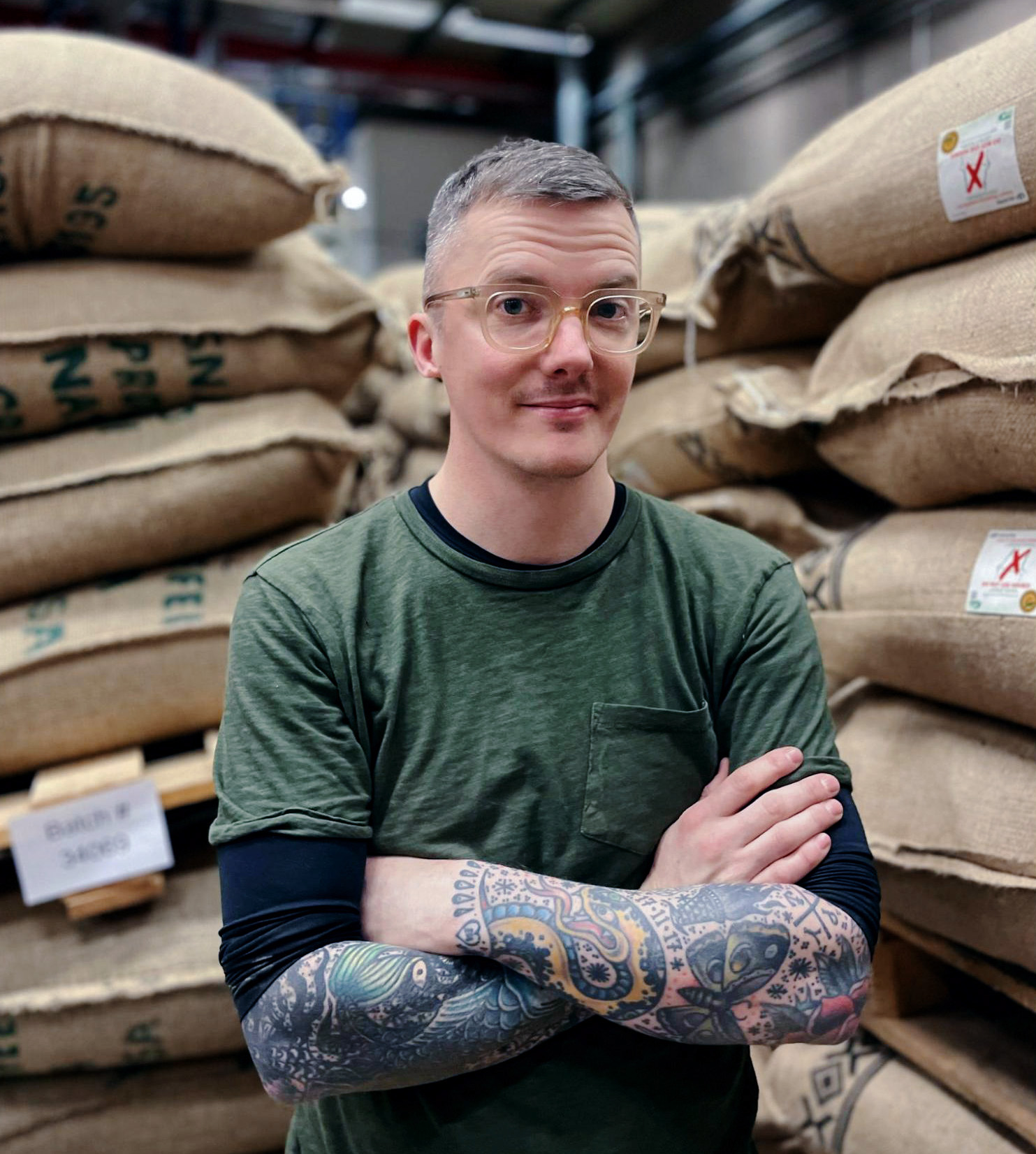Pochissimi dati scientifici confrontano in modo significativo i design delle macchine per tostatura, quindi il modo migliore per comprendere le differenze è l'esperienza pratica. Per sapere in che modo il design della loro torrefazione a tamburo influisce sul loro stile di tostatura, abbiamo chiesto a tre importanti torrefattori come lavorano con le loro macchine.
Krzysztof Barabosz è il cofondatore e responsabile del caffè di Fagioli duri in Opole, Poland. The first roasting machine at Hard Beans was a Giesen W15 — a classic directly heated drum roaster. As the roastery grew, they replaced the Giesen with a Diedrich CR-35 Zenith 2. Diedrich roasters apply direct heat to the drum, but they also share some characteristics with indirectly heated designs.
 Krzysztof Barabosz arrostisce sul Diedrich CR-35 a Fagioli duri.
Krzysztof Barabosz arrostisce sul Diedrich CR-35 a Fagioli duri.
Scott Tedder è il capo torrefattore Bonanza in Berlin, Germany. He roasts on a vintage van Gülpen G45, the forerunner of the Probat G series of roasters. The machine has been updated with modern controls, but it still contains the original cast-iron drum.
Stephen Houston è l'ex capo torrefattore Torrefattori per caffè Bailies a Belfast, Irlanda del Nord, dove ha utilizzato sia tostatrici a tamburo a riscaldamento diretto (macchine Probat UG22, G60 e P5) sia una tostatrice a tamburo a riscaldamento indiretto (Neptune 500). Ha recentemente fondato Tostatore di caffè lucido, dove ha optato per un Diedrich IR-12.
At Bailies, the indirectly heated roaster was ideal for large-scale roasting, Stephen says. ‘The large (120-kilogram) batches wouldn’t have been as well roasted with the direct heat. This type of roasting made matching back-to-back profiles very easy.’
 Stephen Houston nel magazzino di Torrefattori per caffè Bailies.
Stephen Houston nel magazzino di Torrefattori per caffè Bailies.
When it came to roasting specialty coffee, he had better results with the classic drum roaster. ‘I always found the design and build of the older, direct-heat roaster to be a better way to achieve the roasts I wanted,’ Stephen says.